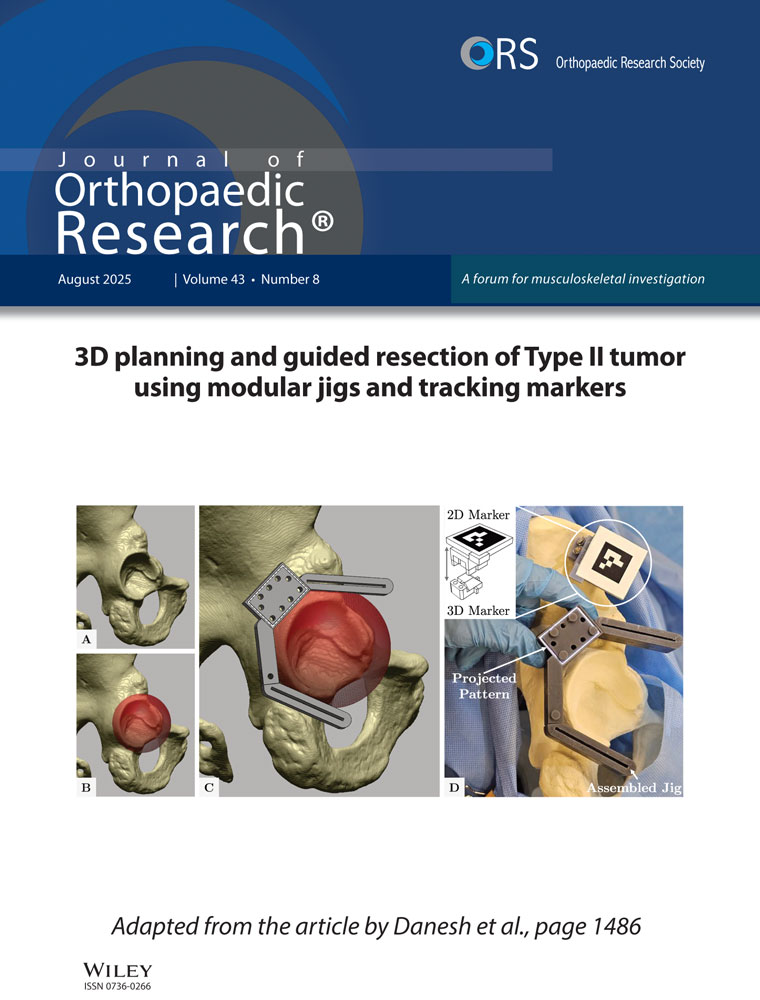Smooth muscle actin expression by human articular chondrocytes and their contraction of a collagen—glycosaminoglycan matrix in vitro
Abstract
Recent studies have demonstrated that human articular chondrocytes can express the gene for a contractile muscle actin, α-smooth muscle actin (SMA), in situ. One objective of this work was to evaluate the SMA-content of isolated human articular chondrocytes using Western blot analysis and to correlate the amount of SMA in the cells with passage number and the number of days in culture. A second objective was to determine if articular cartilage-derived cells expressing the gene for SMA in vitro also continue to express type II collagen. A final aim of the current study was to determine if SMA-containing cartilage-derived cells were capable of contracting a collagen–glycosaminoglycan analog of extracellular matrix in vitro. Articular chondrocytes were isolated from 13 patients undergoing total joint arthroplasty. Cells were serially passaged through passage 7. Samples were allocated for Western blot analysis of SMA. Cells in monolayer culture were also stained immunohistochemically for SMA and type II collagen. Cells from passage 3 and 7 were seeded into a porous type I collagen–glycosaminoglycan matrix and the diameter of the scaffolds measured every other day for 21 days. Immunohistochemistry of the articular cartilage samples revealed SMA in the articular chondrocytes in situ with a greater percentage of cells staining positive in the superficial half (60 ± 1.2%; mean ± SEM) of the cartilage than in the basal half (28 ± 1.3%). There was an increasing amount of SMA in the cells in monolayer culture with passage number and a meaningful correlation of the SMA content with the days in culture (linear regression analysis; R2 = 0.72). Double staining for SMA and type II collagen showed that type II collagen-expressing cells in monolayer could also express SMA. SMA-containing cells were found to contract the collagen–glycosaminoglycan matrix, with the cells containing more SMA (passage 7 cells) displaying more matrix contraction than those with a lesser amount of SMA (passage 3 cells). The results indicate that control of the expression of SMA may be important when employing articular chondrocytes, expanded in monolayer culture, for implantation alone or in a cell-seeded matrix for cartilage repair procedures. © 2001 Orthopaedic Research Society. Published by Elsevier Science Ltd. All rights reserved.




